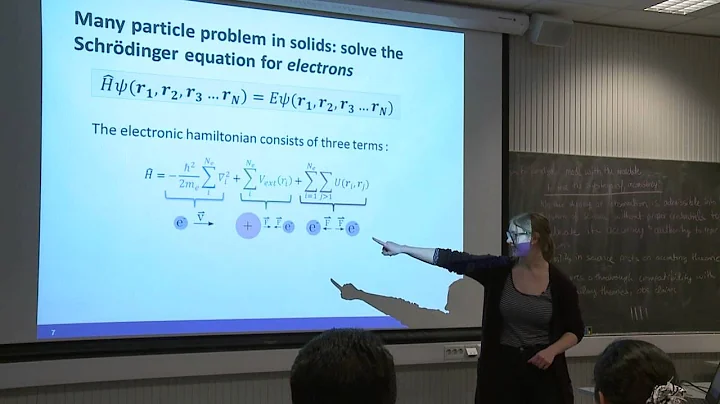First-principles computing has been widely used in scientific research related to physics, materials, chemistry, and biology. However, limited by computational efficiency and accuracy, how to achieve first-principles research on large-scale material systems is a major challenge in this field. The deep learning method based on artificial neural network brings hope to solve this challenge.
Recently, deep learning has been successfully applied to accurately predict the interactions between atoms and and accelerate molecular dynamics simulations. In contrast, understanding and predicting the physical properties of materials is inseparable from electronic structure calculations. The implementation of deep learning methods is more challenging, and research progress is limited. Therefore, developing deep learning methods and solving the efficiency-accuracy dilemma of first-principles electronic structure calculations is a key scientific issue.
Tsinghua University Department of PhysicsXu Yong, Duan WenhuiThe research group developed a deep learning method DeepH, which can quickly and accurately predict the density functional theory Hamiltonian of any atomic configuration from the material configuration. Dramatically speed up electronic structure calculations. The
DeepH method makes full use of the locality principle of electronic properties and can give accurate predictions on large-scale material systems by only using a model trained on a small system data set. By introducing the local coordinate system and the basis set transformation, the DeepH method can properly handle the rotation covariance problem of the Hamiltonian, ensuring the generalization ability of the model and simplifying the learning difficulty. The DeepH method learns from density functional theory data and predicts the Hamiltonian needed to study the material configuration. It can skip the time-consuming self-consistent iteration process of density functional theory and achieve efficient first-principles electronic structure calculations.
By accurately predicting various physical properties of state density, energy band structure, and nonlinear optical response of a variety of representative materials, this work demonstrates the high accuracy of the DeepH method (the prediction error is milli electron volts level) and good of portability.
The test material system covers quasi-one-dimensional/quasi-two-dimensional/three-dimensional spatial dimensions, flat or rolled atomic configurations, strong chemical bonds or van der Waals bonds, single or multiple chemical elements , considered The situation of coupling with or without spin orbit fully illustrates the versatility and transferability of the DeepH method. A successful application of the
DeepH method is the study of double-layer corner van der Waals materials. Corner materials have rich novel physical properties, but because the system has a large molar superperiod, it is difficult to study its electronic structure using traditional density functional theory calculations. The
DeepH method can efficiently and accurately predict the physical properties of various corner material configurations simply by training on the density functional theory results of corner-free material configurations. This process is not limited to element types and unit cell shapes and can be used for Constructing a high-throughput database of corner materials. The DeepH method can provide new opportunities for first-principles research on large-scale materials and physics problems. Schematic diagram of the

DeepH method for efficient electronic structure calculations. a. The density functional theory Hamiltonian is a function of the material configuration and is usually obtained by time-consuming self-consistent calculations. The DeepH method uses a deep neural network to predict the Hamiltonian for a given atomic configuration. The obtained Hamiltonian can be Used to calculate various physical properties. b, Flowchart of using the DeepH method to study corner van der Waals materials. Trained by density functional theory results of corner-free material configurations, the DeepH model can efficiently and accurately predict the physical properties of various corner material configurations.
This result, titled "Deep-learning density functional theory Hamiltonian for efficient ab initio electronic-structure calculation", was published in "Nature Computational Science" on June 23, 2022.

Article link:
https://www.nature.com/articles/s43588-022-00265-6
Research Briefing link:
https://www.nature.com/articles/s43588-022-00270-9
This work is developed DeepH The program package has been used as open source software for users. Users can obtain the open source warehouse and user manual at the link below:
https://github.com/mzjb/DeepH-pack
https://deeph-pack.readthedocs.io




![Introduction to Density Functional Theory [Part One] Background - DayDayNews](https://i.ytimg.com/vi/Ez_Fm4iTUeo/hq720.jpg?sqp=-oaymwEcCNAFEJQDSFXyq4qpAw4IARUAAIhCGAFwAcABBg==&rs=AOn4CLCNt190vTVFRVF5PyjdXjBmourXyw)
















